CMN 210
Text, Image, and Sound

1. Course Description
In contemporary culture, we are surrounded by media and artifacts that attempt to persuade us to buy, believe or behave in certain ways. This course provides students with the analytical tools to understand the ways that text, image and sound work together to create persuasive objects. Using concepts from a wide range of theoretical frameworks related to communication, this course focuses on the design and use of media and messages in contemporary culture and the ways that text, image, and sound interact to create meaningful experiences.
Last Revised
FCD 210
Antirequisites
FCD 210
Delivery
Lecture: 3 hours
2. Course Objectives & Learning Outcomes
- Introduce concepts from communication studies that explain the ways that text, image and sound work together to create persuasion
- Introduce students to elements of sound and visual design
- Develop students’ capacities to create persuasive, multimodal texts
- Assist students to identify underlying social, political and ethical implications of persuasion
3. Topics Covered
Textual elements
- Types of argumentation
- Informational structure
- Forms of textual analysis
Visual elements
- Types of signs
- Elements of design
- Strategies of visual representation
Sound elements
- Sound cultures and environments
- Sound and social relations
- Sound and technology
4. Teaching Method
Workshops and Lectures
Classes will consist of interactive lectures and workshops, in-class and on-line.
Graded Assignments & Evaluation
Evaluation will be based on at least three assignments, of which one may be a multimodal presentation. Some assignments will require students to capture and edit sound and image. Students will have access to appropriate technology and software, as well as workshops introducing these tools.
Microcredentials/Badges + Level 1 Benchmark
Three workshops will be delivered online. The successful completion of workshops will result in three microcredentials/badges: Image Producer, Sound Producer, and Video Producer. Together, the badges constitute the completion of the ProCom Level 1 tech-skills benchmark.
5. Course Materials
Textbooks
A reader with material taken from various sources will support the course.
6. Policy
6.1 University Policies
Students are required to adhere to all applicable university policies found in their Online course shell in D2L and the Course Outline Policies.
6.2 Print and Digital Copying Guidelines:
Toronto Metropolitan University complies with Canada’s Copyright Act which protects both creators/owners and users of copyrighted materials. Students should familiarize themselves with TMU Copyright policies and procedures, and contact the Copyright and Scholarly Engagement Librarian at copyrt@ryerson.ca for questions, concerns and clarification of the copyright rules.
6.3 Turnitin.com
Turnitin.com is a plagiarism prevention and detection service to which Toronto Metropolitan University subscribes. It is a tool that helps instructors determine the similarity between student work and the work of other students who have submitted papers to the site (at any university), Internet sources, and a wide range of books, journals, and other publications. While it does not contain all possible sources, it gives instructors some assurance that students’ work is their own. No decisions are made by the service; it generates an “originality report,” which instructors must evaluate to judge whether something is plagiarized.
Students agree by taking this course that their written work will be subject to submission for textual similarity review to Turnitin.com. All submitted papers will be included as source documents in the Turnitin.com reference database solely for the purpose of comparing the similarity of such papers. Use of the Turnitin.com service is subject to the terms-of-use agreement posted on the Turnitin.com website. Students who do not want their work submitted to this plagiarism detection service must, by the end of the second week of class, consult with their instructor to make alternative arrangements. Even when an instructor has not indicated that a plagiarism detection service will be used, or when a student has opted out of the plagiarism detection service, if the instructor has reason to suspect that an individual piece of work has been plagiarized, the instructor is permitted to submit that work in a non-identifying way to any plagiarism detection service.
6.4 Email Communication
Toronto Metropolitan University requires that any official or formal email communication from students be sent from their official Toronto Metropolitan University electronic accounts.
6.5 Video and Audio Recording
No video or audio recording is permitted in class without the express permission of the instructor.
7. Learning Management System
Toronto Metropolitan University supports Brightspace by D2L as its official Learning Management System. University Policies governing Brightspace have been documented at the Courses @ Toronto Metropolitan University Privacy and Security website.

